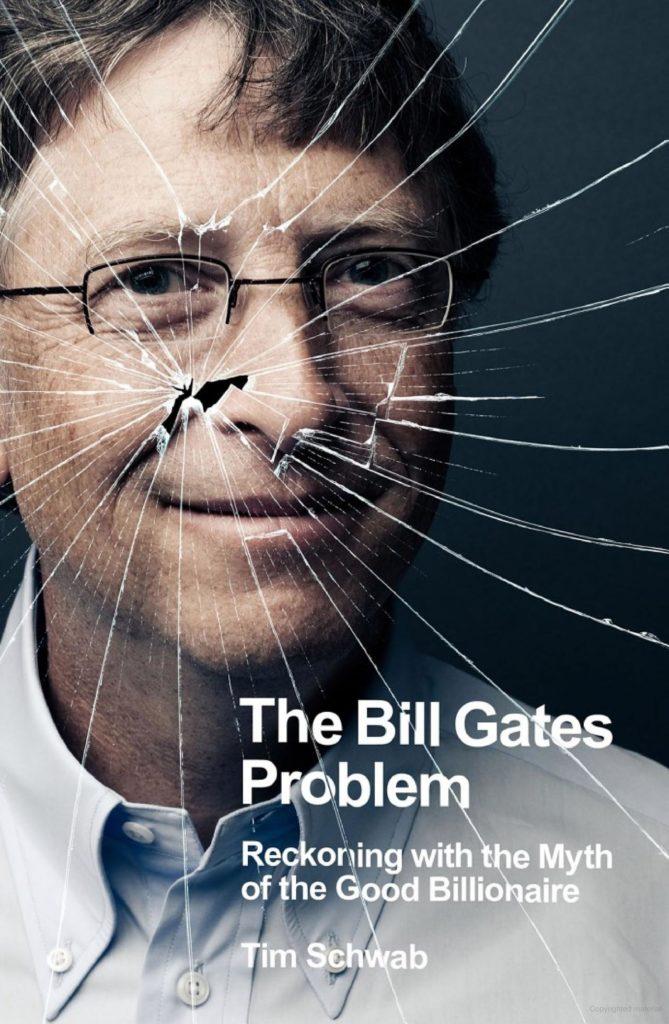
If there’s one part of Tim Schwab’s “reckoning with the myth of the good billionaire” (the book’s subtitle) you read, make it the conclusion. Schwab asks some fundamental questions on these final pages: Should one person, “any person – no matter how benevolent or well intentioned” have obscene amounts of wealth and extreme power? Is our only hope “that our billionaires are good billionaires”? Why does Bill Gates appear to be unaccountable, unimpeachable? Why don’t we “start saying no to Gates’s money”? This chapter should become assigned reading at universities and is a must-read also beyond.
Schwab’s aim was not to write a balanced biography of Bill Gates. In 350-plus pages, Schwab, an investigative journalist, digs into 15 thematic areas. Trying to trace Bill Gates’s influence, he implies it’s nearly impossible to differentiate between the work of Bill Gates, co-chair of the Gates Foundation; for a time in parallel chair and former CEO of Microsoft; owner of the private service company Gates Ventures; or the fourth-richest private individual and investor on the planet. Schwab wants to show that Gates’s highly publicized benevolent giving is nearly always tied to business or private investments. He also paints a picture of Gates as a “corporate animal” – and lobbyist – through and through. Whether on agriculture and Gates’s push for GMOs, health and his strong focus on polio and vaccines, or education and standardized testing in America, Schwab tells a story of a man first and foremost interested in selling and getting others to pay for specific products he believes in.
For anyone who has worked with the Gates Foundation, for them, or been a grantee, the greatest surprise in the thematic sections is not how “it becomes difficult to know where the Gates Foundation ends and some of its grantees, or surrogates, begin – or if, indeed, there is any separation at all.” What Schwab manages in his book is to show just how all-encompassing of the full value-chain Gates’s investments are in the areas he is interested in. Gates funds NGOs and champions who demand products, scientists who invent and trial products, researchers and journals that review these products, private-public-partnerships that market-create and pool funds for these products, multilateral institutions that set norms for these products, and journalists and media who profile these products. This “blanket funding” isn’t benevolent philanthropic giving, it’s a top-down way to control global policy. Intellectual property (IP) waivers (that Gates adamantly rejects) during Covid-19 is provided as an example of just how strong Gates’s control is.
Schwab’s book has three main weaknesses.
First, nearly no-one dared, was allowed to, or wanted to engage in interviews. “No comment” and “no response” litter each page. Schwab explains this as standard Gates strategy: to control all communication directly or through grantees, and not to provide “air” for criticism. Most anonymous sources explicitly noted it would be “career suicide” to “bite the hand that feeds them” (in current or future roles). Second, Schwab goes overboard with priming and at times with language. As most people familiar with Bill Gates and his foundation would probably shrug reading Gates has a hell of a lot of influence, Schwab tries to polarize and dig for dirt even deeper. The second chapter of the book is on sex-offender Epstein, and although there are many baffling associations to Bill Gates that warrant further clarification, the chapter is placed and written in a way that comes across as character assassination. Other chapters include references to Putin and Monsanto that are unclear, at worst misleading. Bill Gates “bleats” his points in a speech, and he has tantrums where his face “turns purple.” This diverts from valid and stronger analysis in the rest of the book. Third, Schwab doesn’t spend enough time explicitly asking why Gates rejects “systemic” and sustainable policies (for example, investing in country health systems, or women’s rights more broadly). Schwab implies Gates is a product guy, ultimately interested in markets and investment returns, and his own legacy. Yes, it’s where he and the Gates Foundation come from. But does this (depressingly) mean they can never change?
Kudos to Schwab for daring to write this book. Schwab poses important questions. Reading the conclusion, I think Schwab is coming at this from the right place, even if he at times oversteps on priming and tone. Most importantly, as someone who advocates for speaking truth to power, I strongly support Schwab on one front: we must be allowed to speak and write about Bill Gates and the Gates Foundation, on our own terms. Unless we get litigated to oblivion, let’s end the current absurd self-censoring.
Disclaimer: Katri has during her career worked for multiple organizations that have received Gates Foundation-funding.